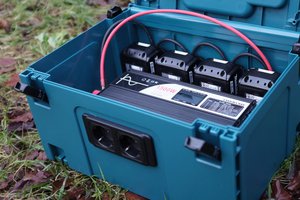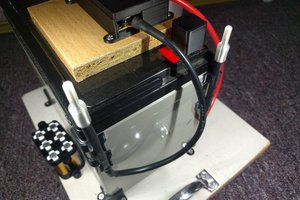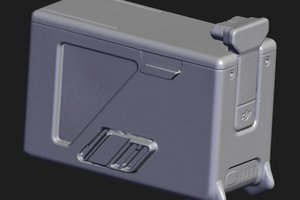===== DISCLAIMER =====
[jimqode] is right:
"Dude, just an accidental short can be a death sentence in that belt. LiPO batteries are volatile and VERY dangerous. Please exchange those for NiMH batteries for your safety."
======================
I wired ten identical 800 mAh 3.7 V LiPo cells in parallel, hooked them up to a Seeeduino LiPo Rider Pro and got the electronics up and running. However, thinking about safety this is bad and should not be done. When using LiPo batteries, two precautions are very important: #1 every single LiPo battery needs it's own 0,5A fuse to prevent accidental shorts. #2 the batteries need to be enclosed in a safe enclosure to protect them from mechanical damage. Sewing them between two pieces of fabric is not a safe enclosure. However, adding this shouldn't be much of a pain.
To make it wearable, one could sew two cheapo belts from h&m together with the (safely enclosed, fused and wired) cells right in between. The LiPo Rider Pro got a nice 3D printed case. That's it.
If you want to build this, make sure the cells are either empty or at least well balanced. Balanced means, that your individual cells do all have exactly the same voltage and charging state. Otherwise, in the worst case, more charged cells might blow up your less charged cells.
Performance tests show that I can charge my Galaxy S4 almost twice from ~5 % to 100% with one charge of the belt. It charges the phone fast, just like a wall charger, but it takes ~16 hrs to charge the belt itself. This is because the LiPo Rider Pro in its vanilla form limits the charging current to 500 mA. I'm working on a solution for faster charging, so stay tuned for updates.
The belt turned out surprisingly flat and comfortable to wear even with the rather unflexible LiPo bricks on the inside. Of course, the belt flexes only between the cells, but that seems to be enough flex to wear it comfortably. After all, this DIY-powerbelt has almost seven times the capacity of the XOO belts flexible batteries.
 Moritz Walter
Moritz Walter




 ric866
ric866
 Thijs Koppen
Thijs Koppen
 CriptasticHacker
CriptasticHacker
 theogene
theogene
This is awesome!
Hope you stay safe and healthy with the current LiPo version.
Also good luck with airport security with this one.